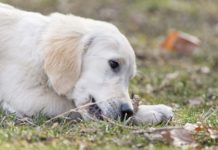
A store clerk once had a favorite customer who was much larger than initial appearances showed. Less than 28 pounds and compact in build she had excellent manners until coming through the door of that store, when this fiery little French bulldog pulled her owner to where she knew ‘her cookies’ were. She then would sit very proper and very politely take her treat and was fine. Anyone who makes light of the intelligence of these small but personal dogs has never seen or been around many.
This is a breed selectively bred down to be a ‘toy bulldog’ for companion use. In the 19th century lace makers began the breed and when displaced to France they took their dogs with them. They became very popular dogs in France and in the late 1800s were named French bulldogs. They are a member of the AKC non-sporting group and must be less than 28 pounds.
Although they were bred as a companion dog many of the little bulldogs in their history were quite useful as ratters in farming communities. There are some historians who believe the Pug had an influence in the breed, but there is a lack of records backing this up.
They were bred for companionship a small, short coated dog with distinctive ‘bat’ ears. They are active little dogs that don’t miss much of what happens in their world. Because of their selective development they are an indoor companion dog. They should be well balanced, with the distance from ground to withers the same as from withers to the base of the tail. Their bulldog ancestry gives them a muscular, heavy boned appearance despite their small size.
With a large, square head and eyes wide apart and set low on the skull the eyes should neither protrude nor sink in. The bone and muscle by the standard presents a ‘big dog’ look despite their small stature.
They can be brindle, fawn, white and brindle with white. Solid black, without a trace of brindle, is a disqualification as is liver, black and tan and black and white. These dogs, should they be born, still have the wonderful character of the French bulldog and are excellent pets, although not meeting the standard for showing.
Due to their alert nature they are good watch dogs but not necessarily good guard dogs. They’ll let you know someone is there but after years bred as a companion they should not be aggressive.
Catching the eye of Americans, they became the rage of society and in 1898 became the first breed to have a specialty show in the Waldorf-Astoria. It is said that a French bulldog was among the ‘passengers’ on the Titanic. Many French Bulldogs were brought to America with an immense popularity.
Originally due to their bulldog ancestors the breed had some born with the bat ears and some with rose ears which appeared more bulldog. Americans preferred the bat ear as the hallmark of the breed and in 1897 an English judge chose their preference of rose ears for best in breed. This led to formation of the first club for French bulldogs in the world, and a standard drawn up which is essentially the same today, stressing the bat ears.
As a pet the Frenchie is a clown in a dog suit. They are naturally willing to please and enjoy being with people. Because of their facial structure, they should not be exercised in weather extremes. Hot, humid weather as well as cold weather can interfere with the Frenchie’s health. Many cannot swim and they are not an outdoor dog. They can snore and drool and sometimes wheeze but are companion dogs from the beginning.
There are health concerns to consider a few include elongated soft palate, inverteral disc degeneration and hemivertebrae. CHD, patellar luxation, entropion, cataracts and deafness can be factors. Sensitivity to anesthesia and Ace Promazine are important factors also.
Like other flat faced breeds stenotic snares an obstruction in the airway, can be a factor. They can be more sensitive to heat extremes. Extra care will have to be taken to provide for these dogs if you live in an area where whether extremes are possible.
Some Frenchies may have Von Willebrands disease, a bleeding disorder that slows clotting. Thyroid disorders aren’t uncommon. Because the breed was developed from small bulldogs, there is possible chondrodysplasia dwarfing. Spinal and back diseases may occur and need to be kept in mind if owning one of these dogs.
Those wanting to breed may find it costs more to breed the French bulldog. In addition to testing for genetic markers for hereditary diseases, some dogs require breeders to artificially inseminate the bitch. Once bred, frequently C-sections are needed due to the large head in the puppies. These issues make it an expensive proposition, with little chance for profit, for those thinking they will raise French Bulldogs as a business.
Another consideration in the care of the French bulldog is due to the structure of the head and mouth, the teeth have less room than in the longer muzzle of, for example, a beagle. The same amount of teeth in less room means a possible increase in dental care. Because dental issues can cause further health issues, prevention is a much better idea especially because of the French bulldog’s sensitivity to anesthetic. The use of appropriate chew toys and recreational bones can naturally provide a healthy mouth with prevention, without having to stress the dog at all.
As a pet, the French bulldog is extremely loyal, sometimes becoming so attached to their owner they may become defensive about other pets or people coming near. Coupled with their intelligence, this should be dealt with and not allowed to become a bad habit. Although the breed is sweet natured they can be changed with environment and teaching and unwittingly teaching your dog to behave inappropriately is not a good option.
Due to potential breathing issues it’s wise to avoid a harness or any type of choke collar on your French bulldog. Teaching them to walk properly on a leash makes it easier for them to breathe and, with it, more comfortable.
This is an excellent companion dog, a role they have filled by selective breeding for over 150 years. The French bulldog is an incredible dog for a dedicated owner. They have been developed as a pet dog and just as those developed for herding excel at that, so does the French bulldog at filling his role as a companion dog. Finding the right individual within the breed is key and if you’re looking for a pet don’t overlook those ‘off color’ dogs. It doesn’t take a show dog to be a fantastic pet.





